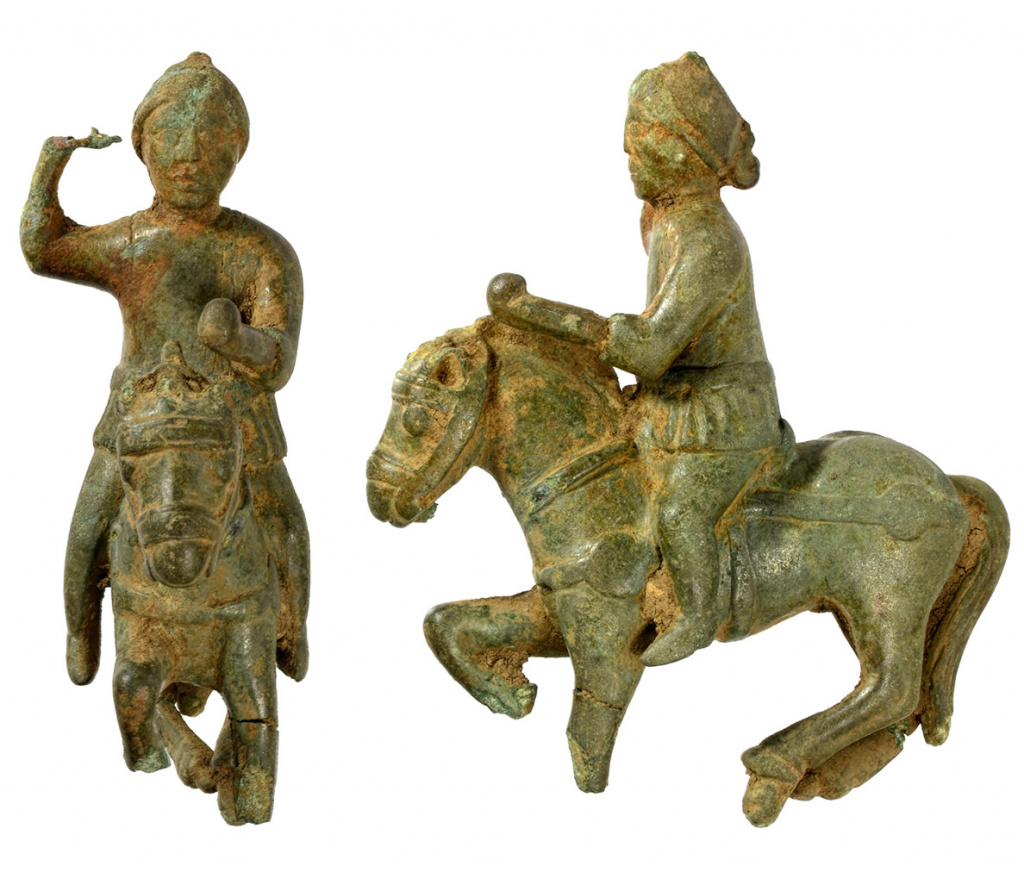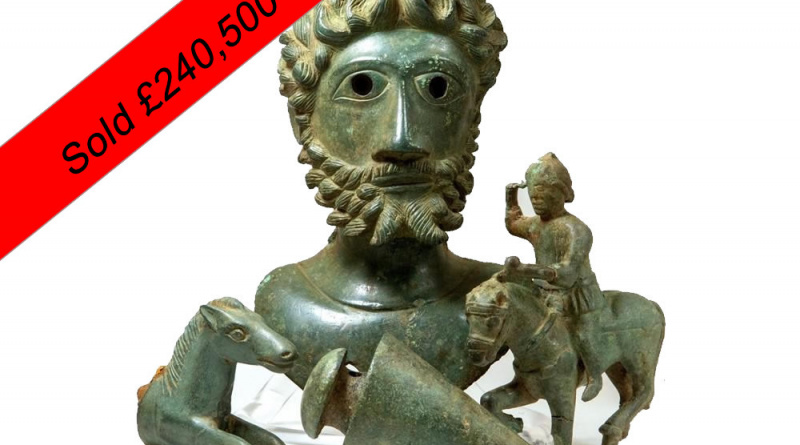Hansons sell Ryedale Bronzes for £240,500

Ryedale Bronzes
Hansons have sold the Ryedale Bronzes, with a hammer price of £185,000 . With the Buyer’s Premium of 25% plus VAT the London phone bidder will pay £240,500.
The bidding soared thanks to three phone bidders and quickly passed its estimate of £70,000 – £90,000.
This collection, known as the Ryedale Ritual Bronzes, was the star lot in Hansons’ two-day Historica Auction on May 20 and 21. It was a detecting find from Yorkshire in May 2020 and is considered of “National Importance”.
Discovery
The items were discovered by detectorists James Spark and Mark Didlick, in May 2020 in Ryedale, North Yorkshire. James said that they had detected on the land for several years and had the occasional Roman find. The first object they found was the horse and rider figurine. At first, they thought it was a lead toy soldier on a horse. Close by, they found the bust and plumb weight. The next day, Mark unearthed the horse head terminal.
The find location is significant as this the northernmost find of a bust of this type. Other finds have been from eastern and central England, south of the Humber.
The artefacts were taken to York Museum and recorded at the PAS: YORYM-870B0E
The Collection
It is thought that the articles would have formed a set of ritual implements, used in religious ceremonies and for predicting the future. It is believed that they were deliberately buried together as part of a ritual deposit.
Sceptre head bust

Sceptre head bust
The portrait features resemble those of Antonine emperors – Antoninus Pius, Lucius Verus, Marcus Aurelius and Commodus. Although a definitive identification is not possible, the most likely candidate is Marcus Aurelius.
Marcus Aurelius was emperor for 19 years from 161 AD. His reign was marked by military conflict. Troops returning from campaigns in the Near East brought with them a pandemic, known as the Antonine Plague. It is suspected that this was smallpox or measles. The total death count has been estimated at 5-10 million.
Horse and Rider figurine

Horse and rider figurine
Breaks on the figurine suggest that the raised right arm held a spear and that the left arm had a shield attached. The figurine is thought to represent Mars.
Plumb bob

Plumb Bob
Measuring implements are often shown on dedications on tombstones and it is possible to see reasons why a plumb bob would have been used as a votive deposit.
Plumb bobs were used in construction and land organisation, both of which would have rituals associated with them.
It may also have been used as a key object to demarcate sacred space with accuracy.
Horse Head Key Handle

Horse head key handle
What survives of the shank suggests a square profile which would be expected for a key.

